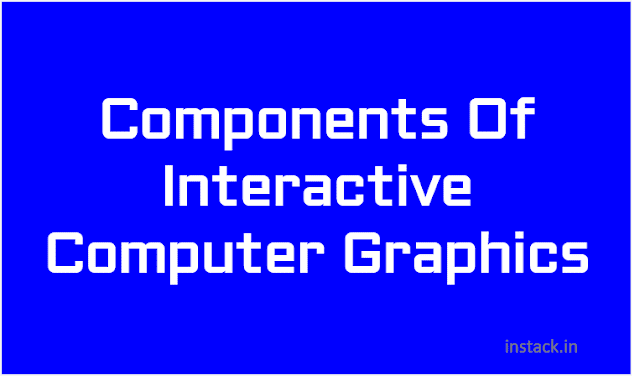Components of Computer Graphics
Interactive
computer graphics consists of three components namely:
1) Digital
Memory Buffer: In this image is stored as a matrix of intensity values.
This is the place where images or pictures are stored as an array (matrix of 0
and 1, 0 represents darkness and 1 represents image or picture). This is also
called Frame Buffer. In today’s terms, a frame buffer is called V-RAM (Video RAM)
and it helps to store the image in bit form. It helps to increase the speed of
graphics.
2) T.V.
Monitor: It displays stored images. The monitor helps us to view the display and
they make use of CRT technology (Cathode Ray Tube).
3) Display
Controller: It is an interface between Digital Memory Buffer and T.V.
Monitor. Its job is to pass the contents of the Frame buffer to the monitor. This
passing has to be fast for a steady display on the monitor (depending on the
material of the system).
The
image must be passed repeatedly to the monitor to maintain a steady picture on
the screen. The display controller reads each successive byte of data from the
FB memory and converts 0’s and 1’s into the corresponding video signals. This signal
is then fed to the T.V. monitor to produce a black and white picture on the
screen.
In
today’s terms, a display controller is recognized as a display card and one of our
choices can be a VGA card with a resolution of 640 x 480. (Display controllers
are also capable of displaying images. in colors). Several graphics systems
have been designed this way.





